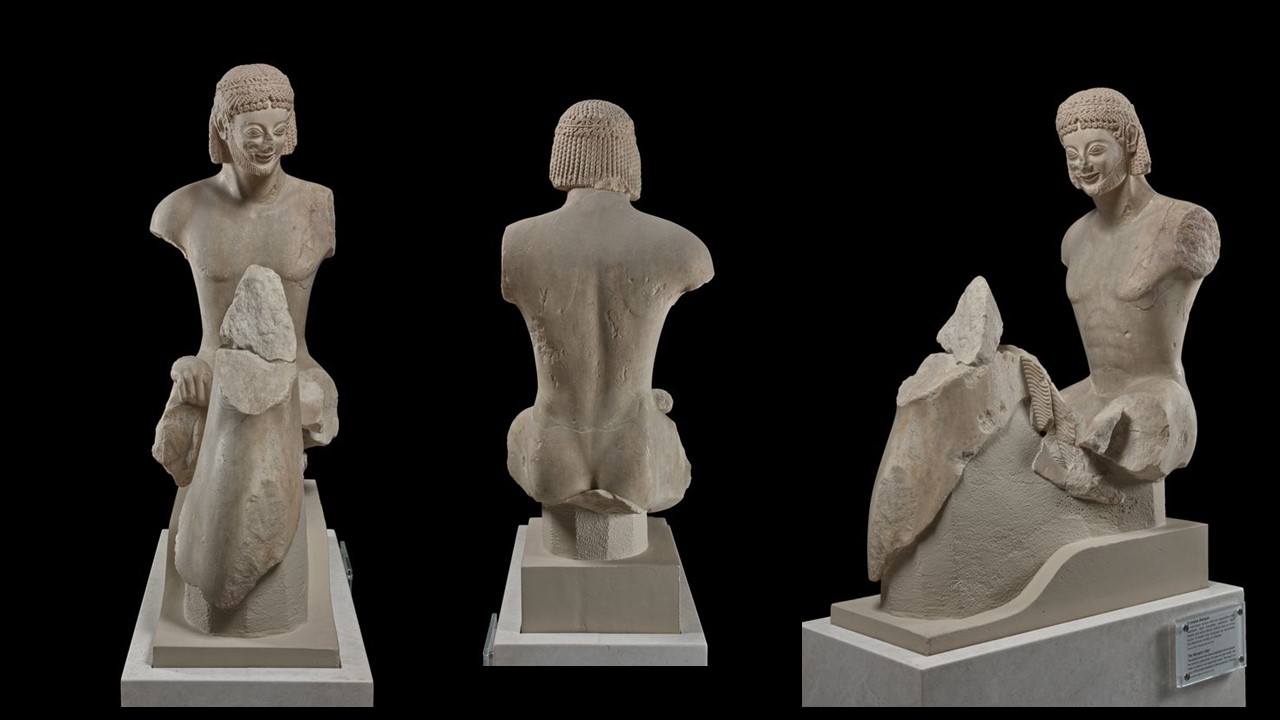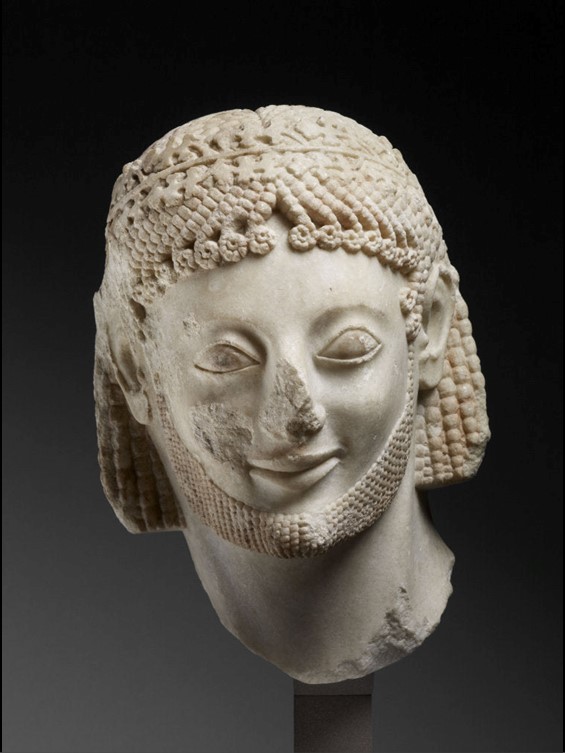
…Come, take the Dorian lyre down from its peg, if the splendor of Pisa and of Pherenicus placed your mind under the influence of sweetest thoughts, [20] when that horse ran swiftly beside the Alpheus, not needing to be spurred on in the race, and brought victory to his master, the king of Syracuse who delights in horses… writes Pindar in his Olympian Ode 1, and I think of The Rampin Rider in the Acropolis Museum!
The Rampin Rider is an ancient Greek marble Archaic statue dating back to around 550 BC. It depicts a young horseman in a dynamic pose and is believed to represent a victorious athlete or a noble youth. The statue is renowned for its detailed craftsmanship and is a prime example of early Greek sculpture, combining Archaic stylization with emerging naturalism. https://www.theacropolismuseum.gr/en/statue-rider-rampin-rider
Today, the Rampin Rider statue is unfortunately divided between two major museums. The larger portion, including the torso and horse, is housed in the Acropolis Museum in Athens, Greece, where it is displayed alongside a plaster cast of the missing head. Meanwhile, the head of the rider, known for its distinctive Archaic smile, is displayed at the Louvre Museum in Paris, France, accompanied by a cast of the rest of the statue. This arrangement highlights the division of this significant artefact between the two institutions. https://collections.louvre.fr/ark:/53355/cl010276879

https://www.neo-mfg.com/products/history-roman-rampin-rider-60671
The Rampin Rider statue, the oldest and most renowned equestrian statue dedicated to the Acropolis, depicts a naked youth seated forward on his horse, almost on its neck. Once holding a metal bridle and reins attached through drilled holes in the horse’s mane, the rider is portrayed with keen attention to anatomical detail, especially in the physique and abdomen. Adorning his head is a wreath made of wild celery or oak leaves, signifying his victory in an equestrian event, possibly at the Nemean or Olympic Games. The rider’s face, characteristic of the Archaic period, features large almond-shaped eyes, thin eyebrows, and the distinct “archaic smile.” Remarkably, traces of original colour still remain on the rider’s face and hair, as well as on the horse’s mane, offering a glimpse into its original vibrant appearance.
During the Archaic period of ancient Greece, statues depicting riders held significant importance as symbols of wealth, status, and military prowess. These expensive dedications were commissioned by members of the upper socio-economic classes, specifically the pentacosiomedimnoi and triacosiomedimnoi, who were responsible for maintaining war horses. Participation in equestrian events was exclusive to affluent nobles, either as athletes or horse owners, reflecting their elite status. The rider statues, such as the Rampin Rider, were often dedicated on the Acropolis as commemorative monuments to celebrate victories in prestigious games, underscoring the social and political influence of the aristocracy in ancient Greek society.
The larger portion of the Rampin Rider statue, including the rider’s torso and the horse, was unearthed in a Perserschutt ditch, a significant archaeological context filled with statues and other artefacts deliberately buried after the 480 BC Persian sack of Athens. These ditches were created by the Athenians to dispose of the destroyed remnants of their sacred and civic monuments after the Persians razed the city. The Perserschutt deposits are invaluable to archaeology because they provide a well-preserved snapshot of Athenian art and culture before the Persian invasion, capturing details of early Greek sculpture, architecture, and religious practices. The discovery of the Rampin Rider in this context highlights the cultural loss and resilience of Athens, as these broken yet revered artworks were buried with care and later played a crucial role in reconstructing the history of Archaic Greece.
For a Student Activity, please Check… HERE!